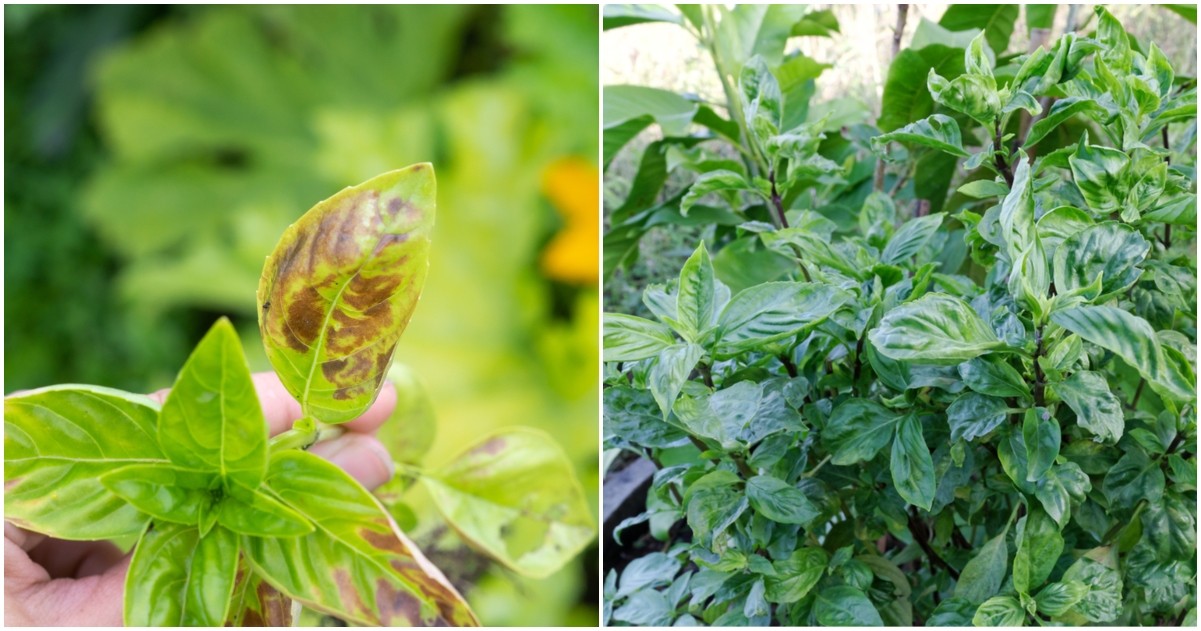
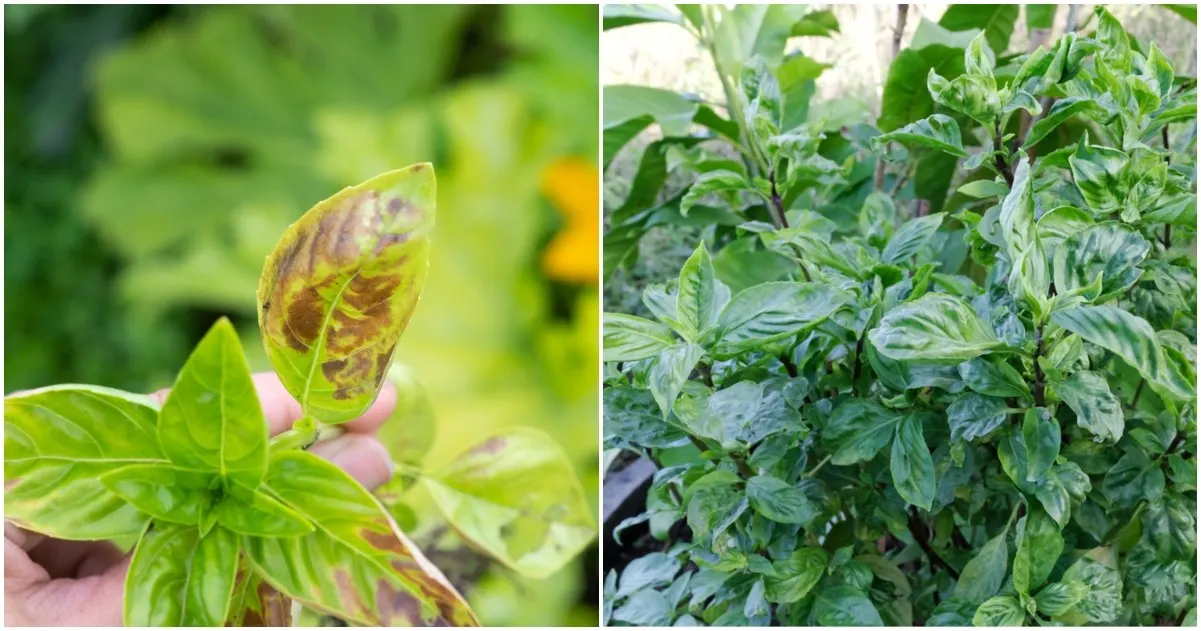
Basil is an annual herb well-known for the position it performs within the Italian dish pesto and to be used within the cuisines of nations like Thailand, Indonesia and Vietnam.
There are over 60 forms of basil, with some sporting pink or purple leaves, however nonetheless the most well-liked for culinary functions is the green-leaved candy basil.
Different basils (together with perennial varieties) have completely different flavored leaves some are even named for the style they convey – like cinnamon basil, lemon basil and even spicy bush basil.
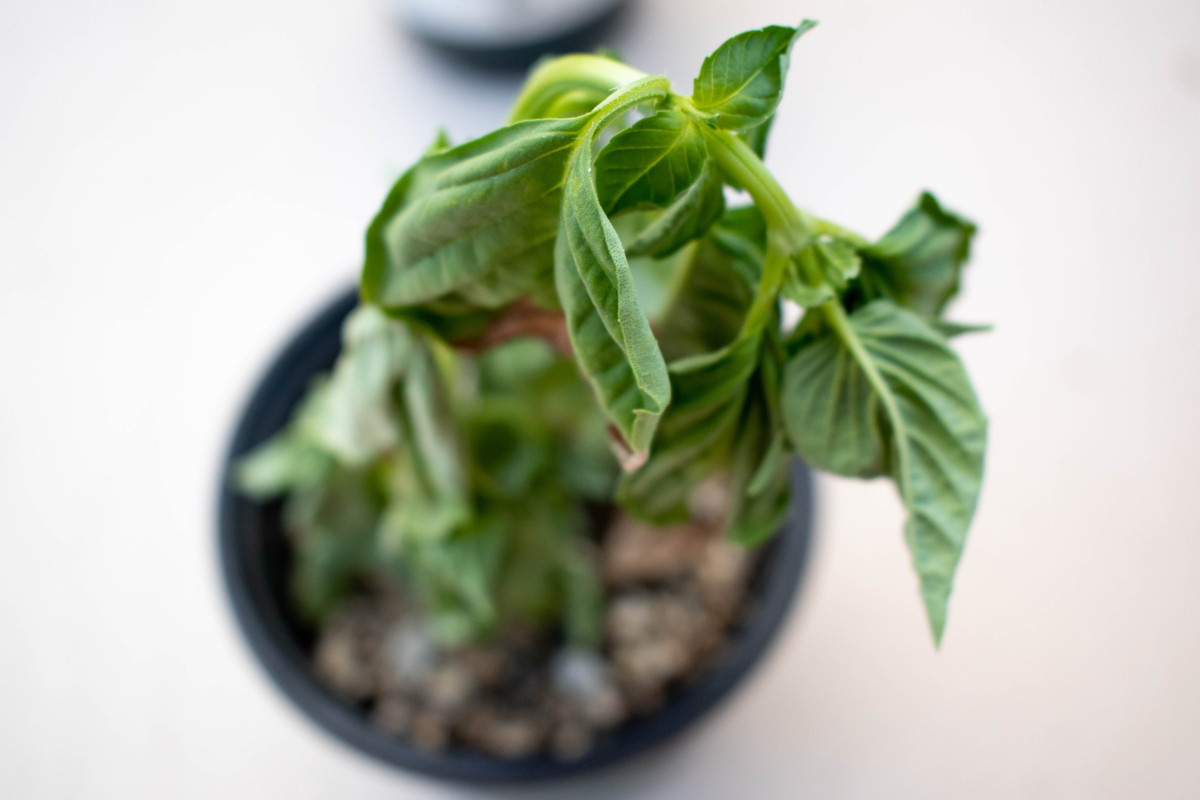
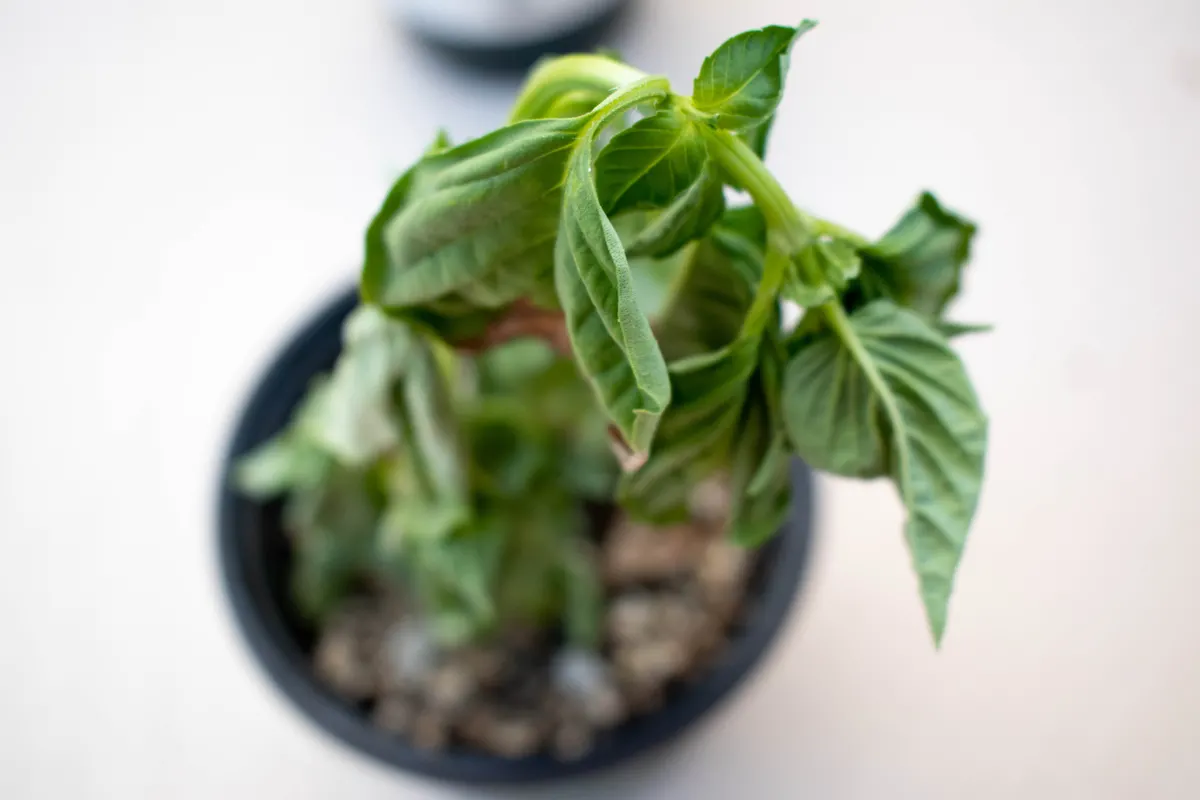
Sadly, the leaves – probably the most helpful a part of a basil plant – are sometimes the a part of the plant that will likely be attacked with issues. Whether or not your crops are leggy or your leaves translucent, we’ve acquired all of the potential basil issues and their options coated.
1. Leggy Crops
Too A lot Fertilizer


Basils grown open air can use an additional dose of fertilizer sometimes to maintain crops wholesome and producing leaves. Relying on the kind of fertilizer you select, that is usually utilized as soon as monthly or extra typically throughout the rising season.
Feeding basil typically might create larger, faster-growing crops. However, they will additionally develop too quick, turning into leggy with low-quality leaves. The oils within the leaves that give the crops their distinctive taste will even be decreased with an excessive amount of fertilizer, leading to unappetizing leaves.
All the time fertilize in line with packaging directions and by no means apply greater than is really helpful.
A Drop In Temperature
Variations in temperature may also have an effect on basil crops and inhibit their progress. They’re notably delicate to dips in temperature, preferring a hotter local weather. Be certain that to solely plant them as soon as the possibility of frost has handed to keep away from leggy progress after a chilly snap. Depart rising to a bit later in spring in the direction of summer time or develop in containers that may be moved indoors in cooler in a single day temperatures.
Not Sufficient Daylight
Basil likes lots of daylight – a minimum of 6-8 hours a day of full solar. If the sunshine just isn’t adequate – typically an issue with basil grown indoors – they’ll grow to be leggy to search for the sunshine. Prune and transfer to a brighter space and the brand new progress ought to return to regular.
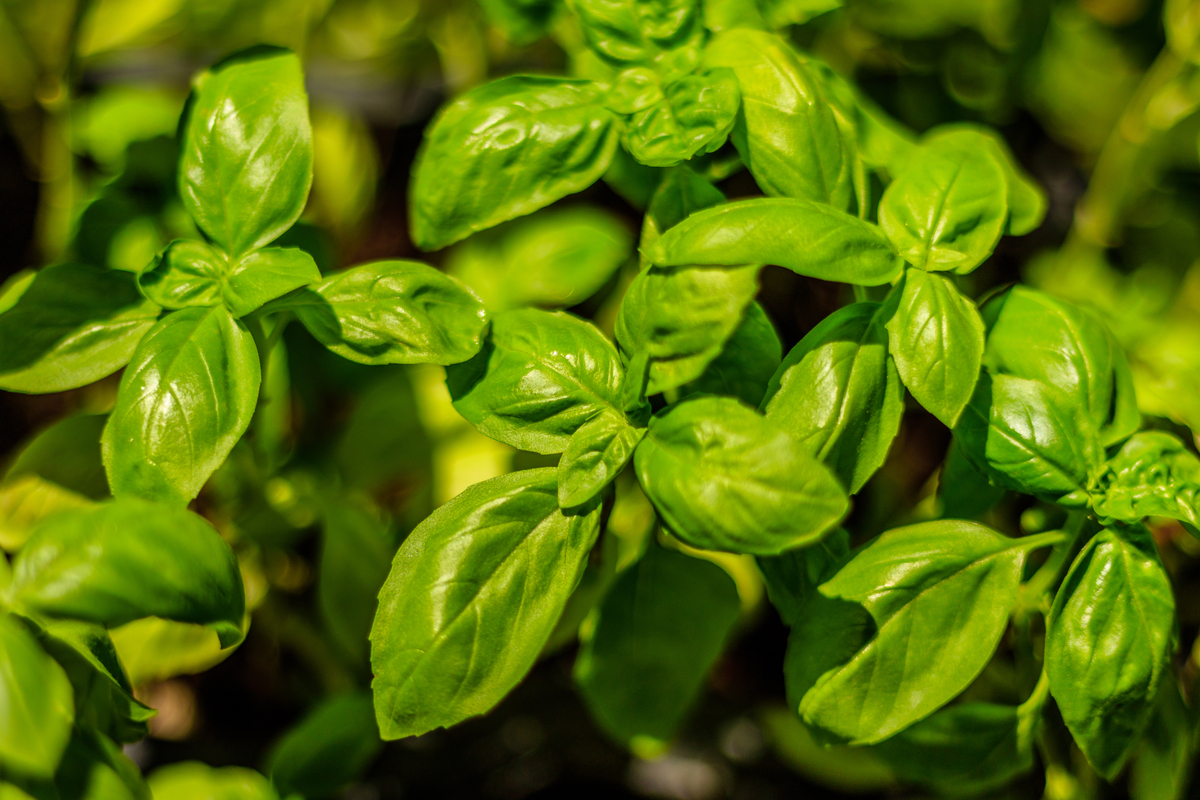
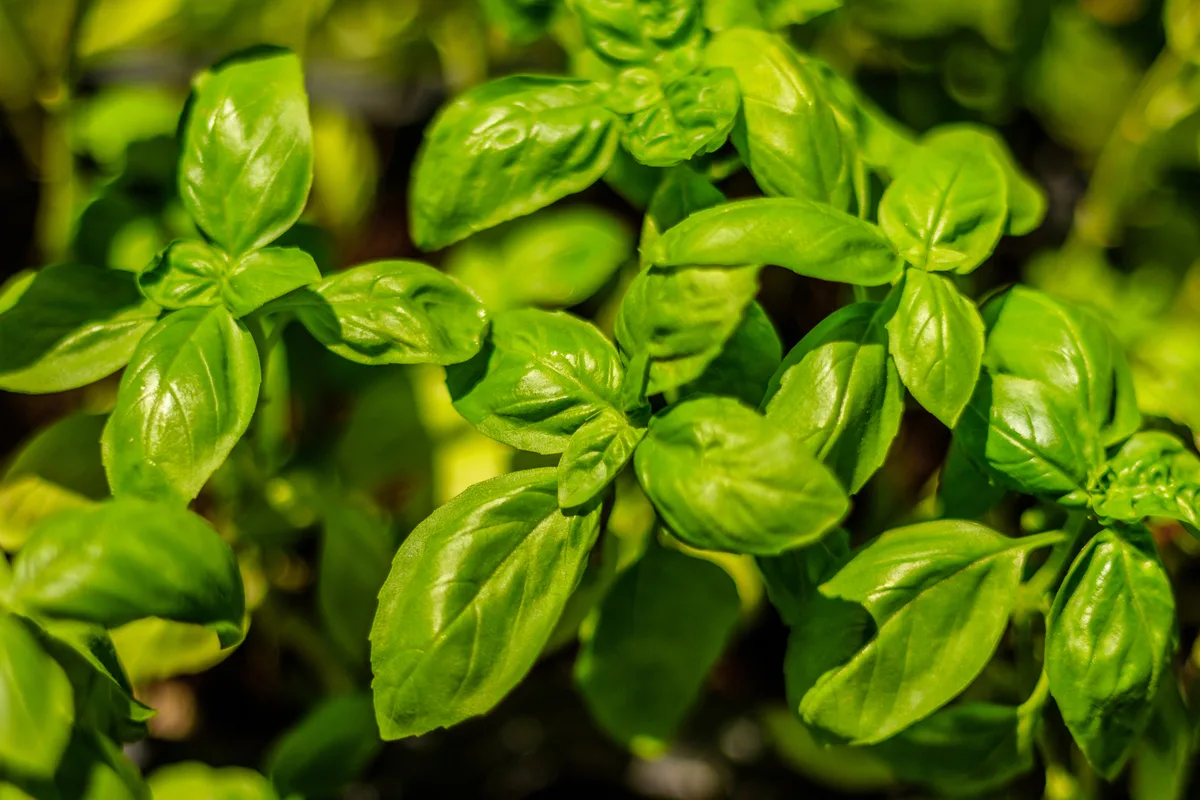
Incorrect Watering Or Lack Of Drainage
Watering basil is a difficult enterprise. They want extremely well-draining soil, however in addition they just like the soil to be stored moist. This implies watering often whereas avoiding the dangers of waterlogging. Overwatering will trigger the stems to rot, however underwatering will produce leggy stems and a scarcity of leaves. Additionally, it’s greatest to water the soil and never the leaves to forestall fungal illness and stunted progress.
Water deeply as quickly as the highest of the soil begins to look dry and by no means let the soil dry out fully. Mulching your basil plant will assist to lock in moisture.
Lack Of Common Pruning Or Harvesting
One of the crucial vital issues to recollect to keep away from leggy crops is to often harvest the leaves. To ensure that them to develop into bushy, leafy crops, they have to be trimmed typically.
By pruning the highest of the crops, extra gentle can entry the stems and leaves within the middle of the plant, growing their vigor. Pruning additionally stops the basil from flowering. As soon as this happens the leaves flip bitter, so it’s vital to forestall flowering for so long as potential.
Fortunately, now we have the best possible step-by-step basil pruning information which can guarantee big basil crops.
2. Yellow Leaves
Lack Of Vitamins
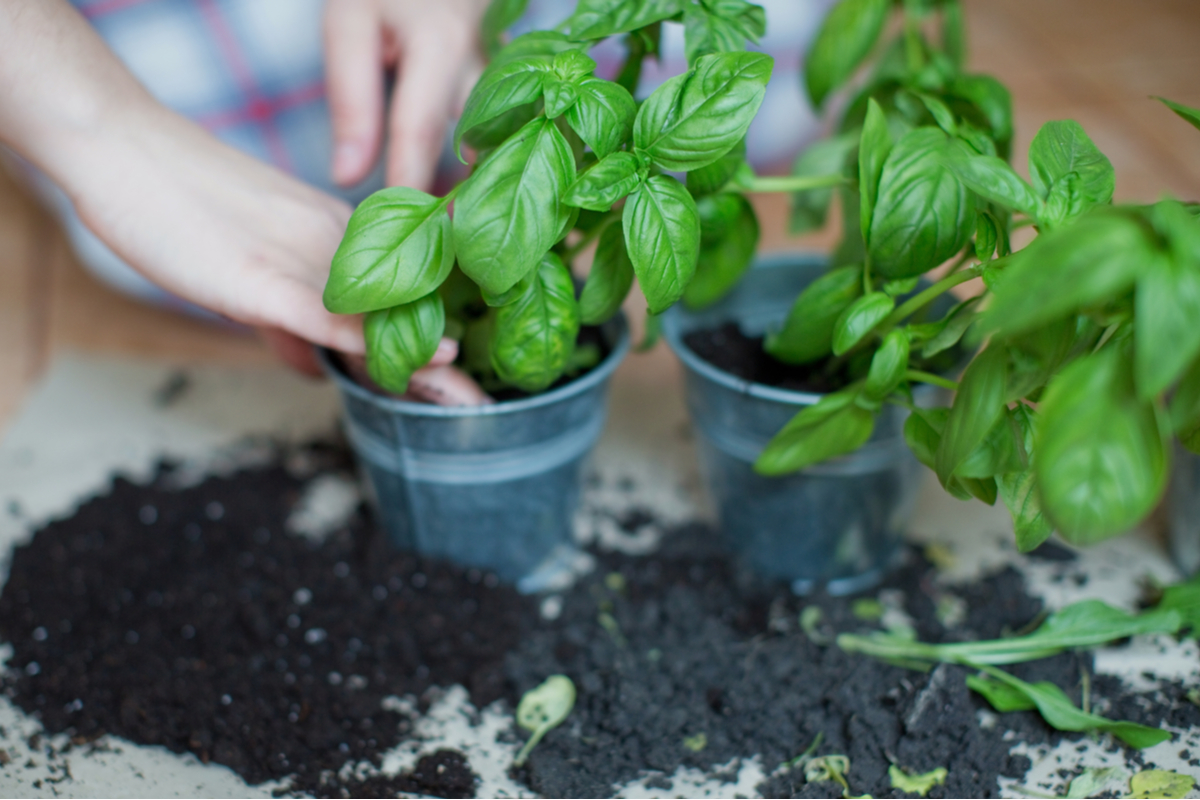
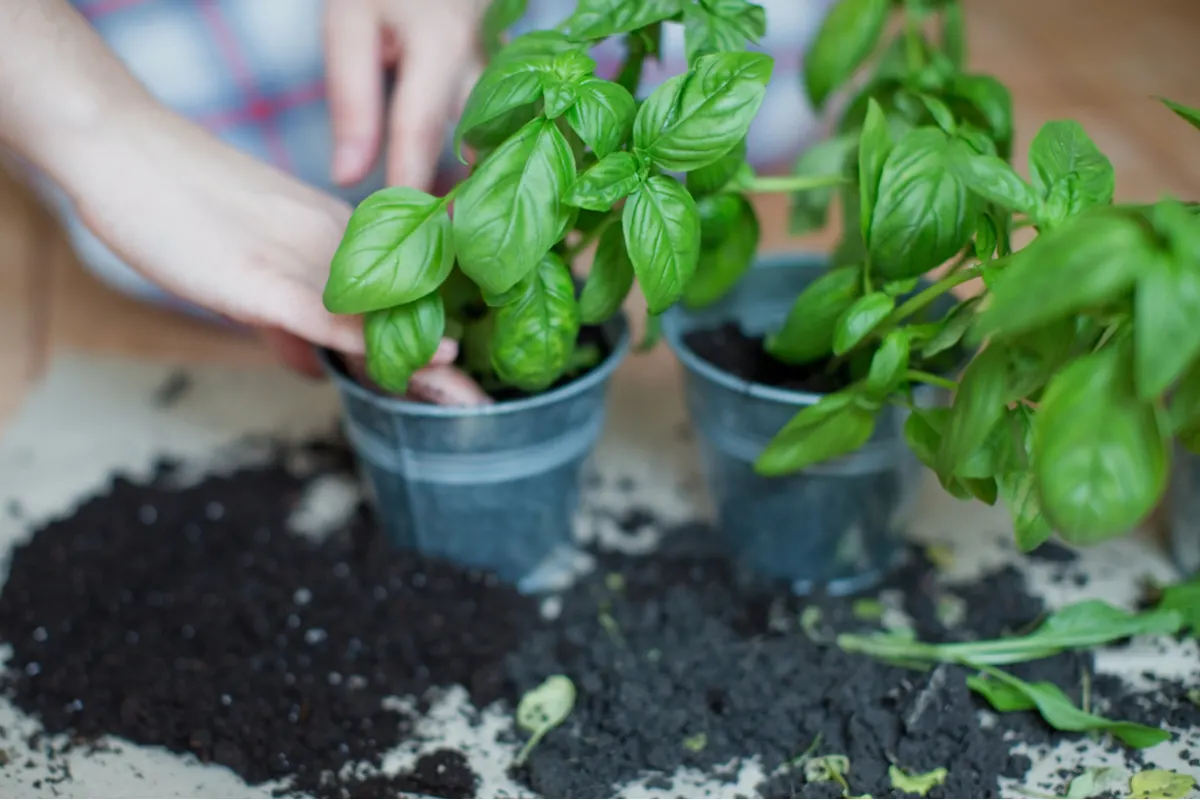
Step one to tackling this drawback is the dearth of correct vitamins. For basil a balanced fertilizer is perfect, however in relation to yellowing leaves, the issue is normally brought on by a scarcity of nitrogen. Add dose of compost or well-decomposed manure or strive a excessive nitrogen dose of fertilizer. If the issue just isn’t mounted, your yellow leaves could also be brought on by watering points.
Watering
Yellow leaves are normally brought on by underwatering or overwatering. Because of their love of moisture, underwatering is often extra frequent, however yellow leaves mixed with soggy stems point out overwatering is the trigger. Be certain that the soil has good drainage and is moist however not waterlogged. Overwatering may trigger root rot, resulting in yellowing leaves and the last word demise of the plant if the issue just isn’t rectified.
Fungal Infections
Soil-borne fungal illnesses connect to the foundation techniques of basil and trigger root rot, leaving the basil leaves yellow. Dig up the plant to examine the roots. If they’re brown or slimy your basil has root rot and it’s greatest to throw out the plant and begin over.
The fungal illness downy mildew may cause the identical drawback. Small, yellow angular spots seem on the higher leaves and greyish mildew normally kinds on the underside. The leaves flip yellow after which brown as they curl and wilt. Lower off any contaminated leaves and deal with what stays with an natural fungicide that features copper.
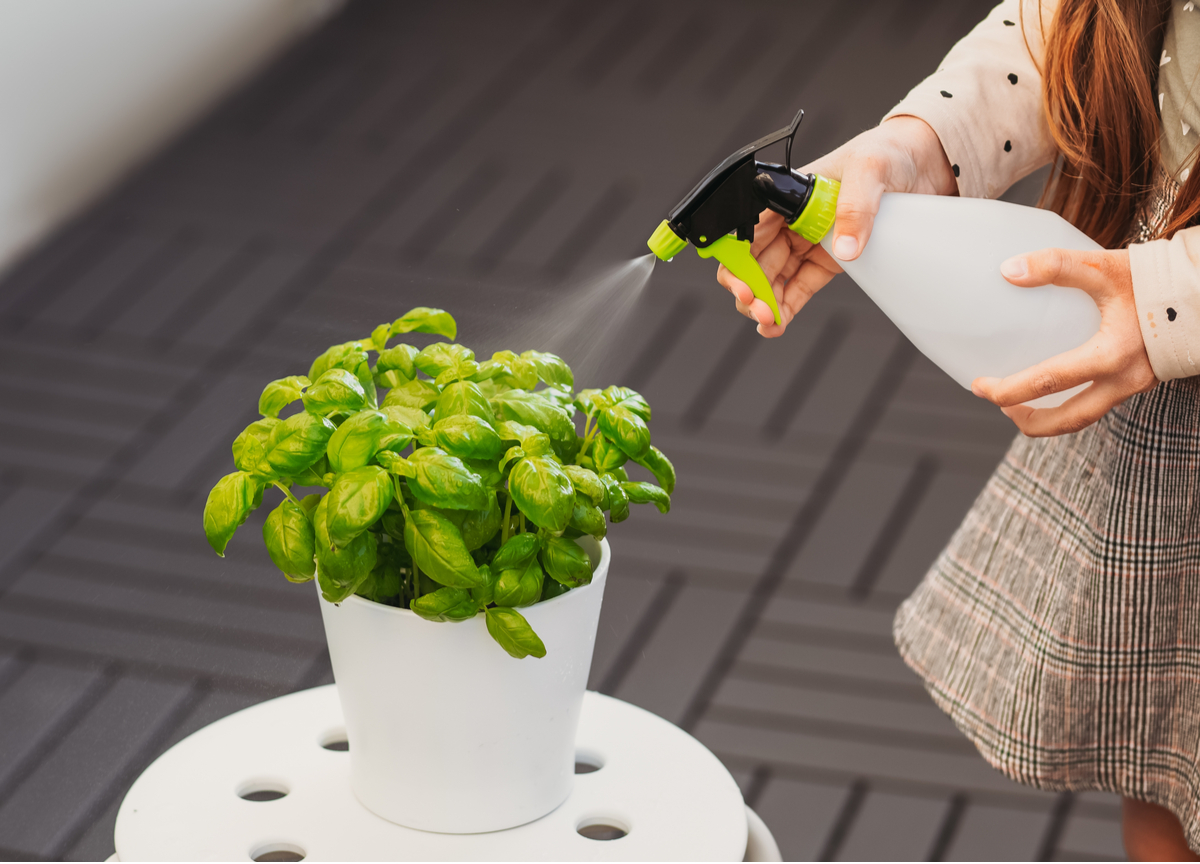
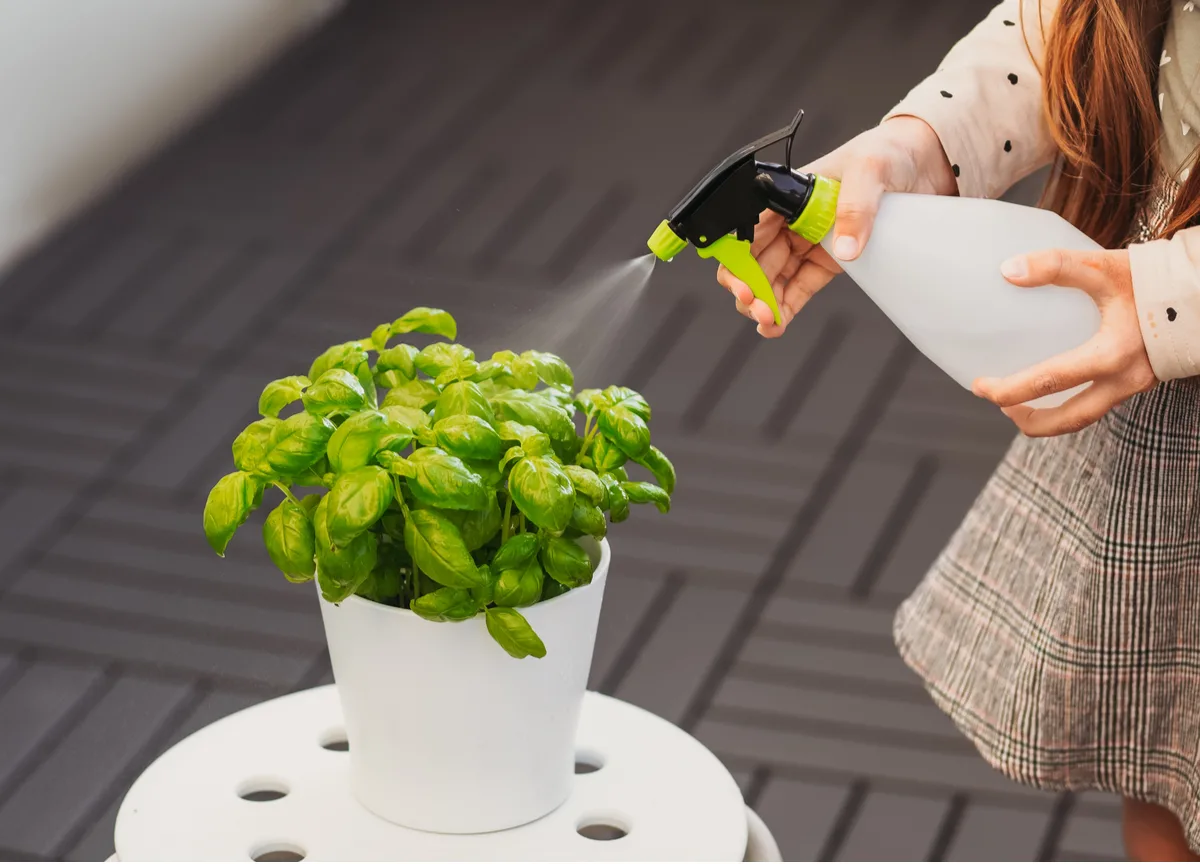
Nematodes
These small pests are discovered on the base of the plant and within the roots and can trigger the leaves to yellow. They’ll additionally produce galls on the stems. It isn’t straightforward to do away with the pests and the one possibility could also be to begin once more with varieties which can be nematode-resistant.
3. Black and Brown Spots
Frost
Even a small little bit of frost can negatively have an effect on basil. It’s a really delicate plant and particularly weak to dips in temperature. Frost may cause the leaf suggestions and the tops of the plant to blacken and die.
Plant basil later in the summertime season in order that the possibility of frost is vastly decreased. You can too develop in containers so the pots could be moved indoors when there’s a probability of frost.
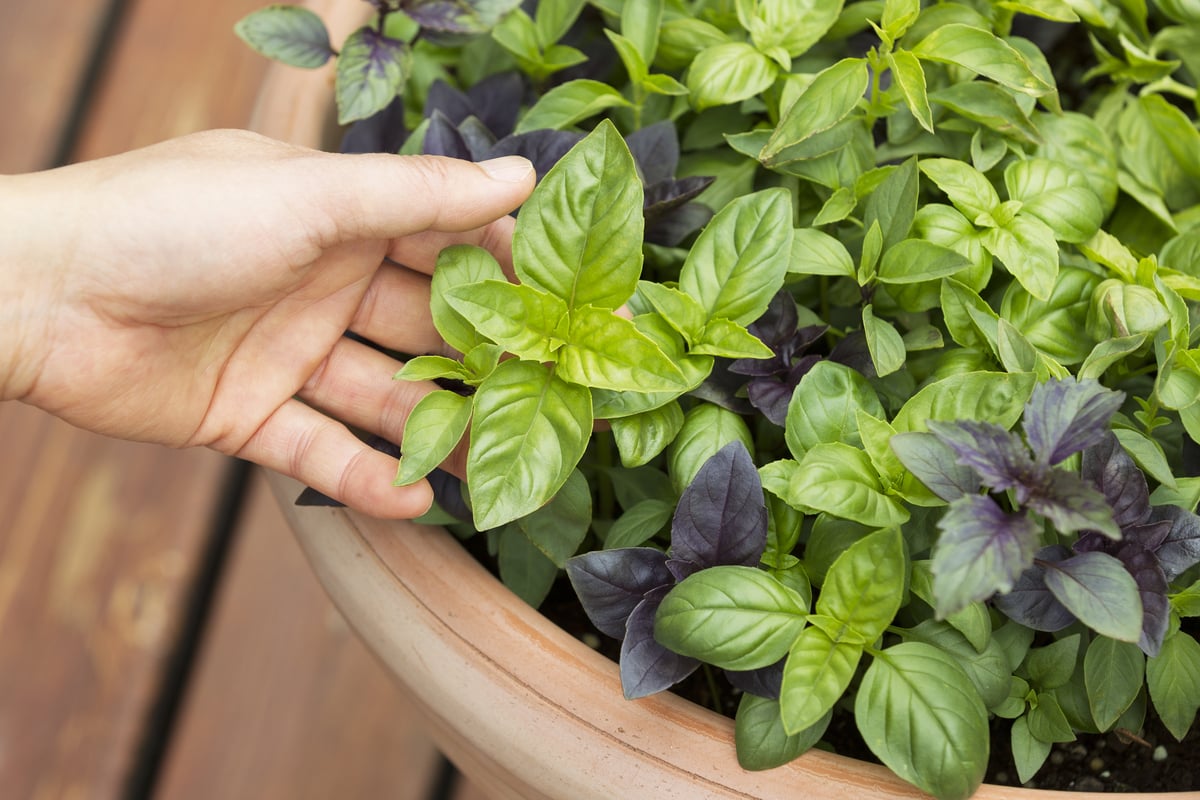
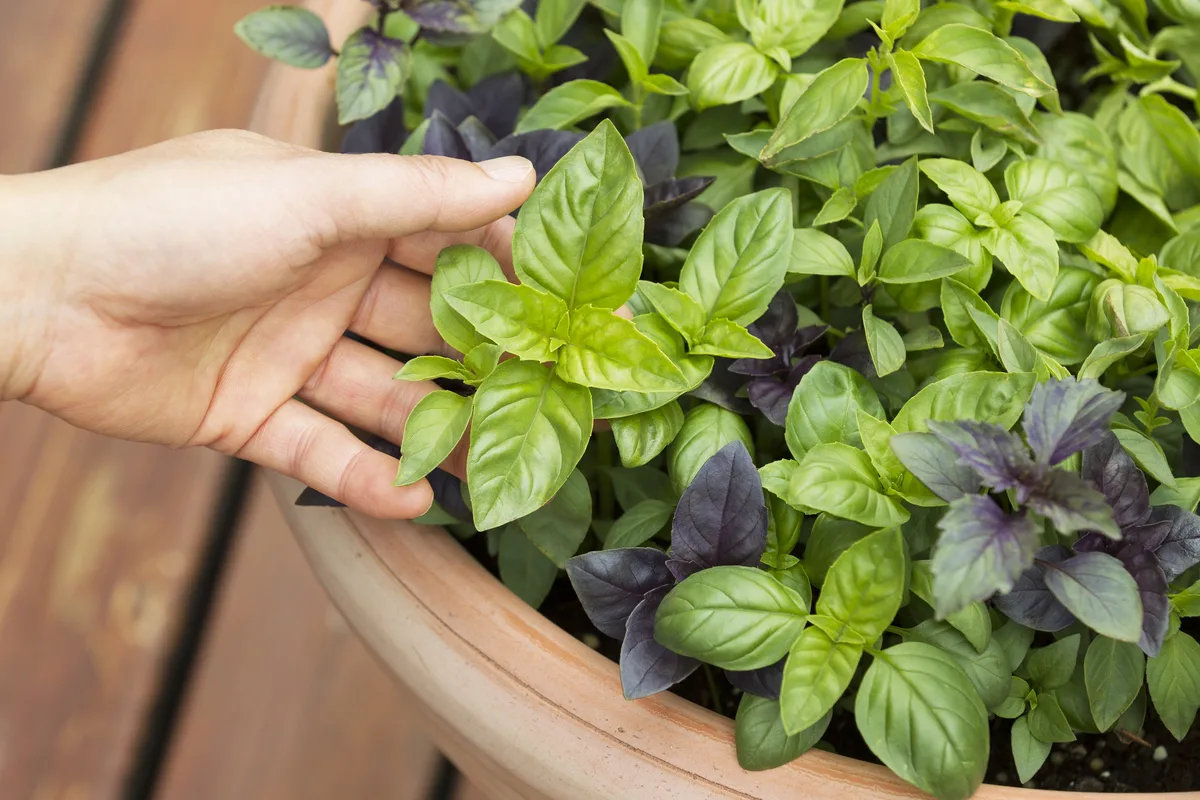
If they’re in a backyard mattress, cowl them with frost safety material or bell jars if there are any reviews of frost to come back. If the plant is broken, minimize off all of the contaminated leaves as soon as the chilly passes and provides it a lift of fertilizer to get the leaves rising once more.
Fungal An infection
Black spots from fungal infections normally seem on the underside of the leaves. They’re typically troublesome to determine and might be something from downy mildew to bacterial blight.
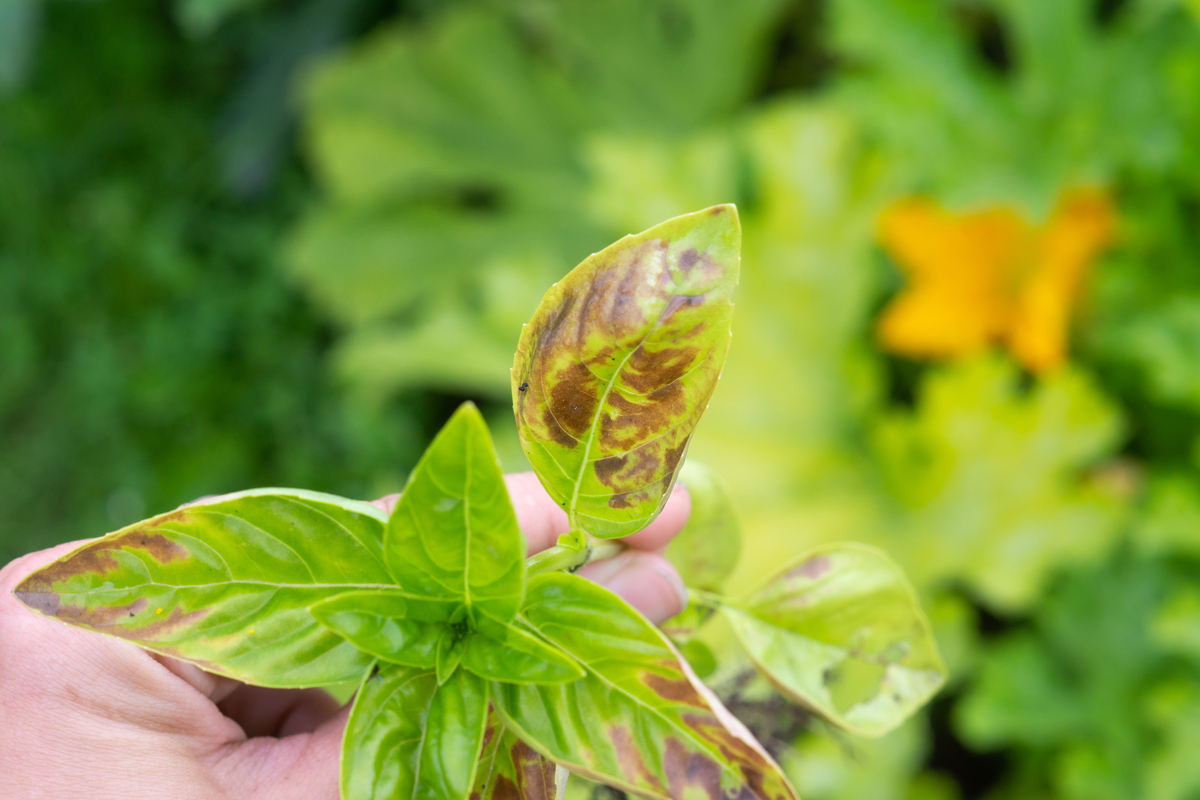
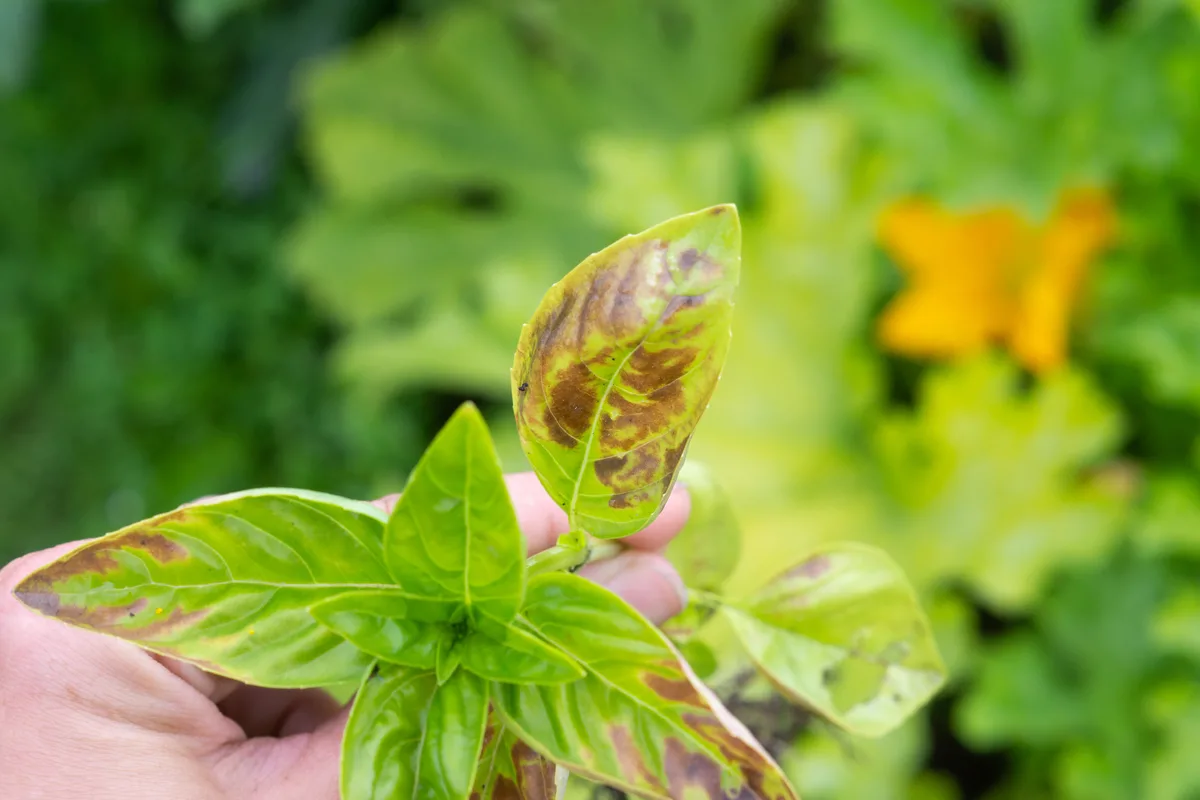
Hold crops properly pruned to enhance air circulation and ensure they get sufficient daylight. Water within the mornings moderately than the evenings and solely on the base of the plant. As a final resort, use a fungicide that may kill off any illnesses.
Insufficient Vitamins
Brown spots on basil leaves are as a rule from a case of both an excessive amount of nitrogen or too little. Use natural compost to steadiness out the vitamins and restore the soil to good well being. For those who assume there could also be an excessive amount of fertilizer in nitrogen type (maybe from a latest fertilizer software), flush the soil with water and maintain off on fertilizing for some time.
4. Clear Spots Or Translucent Leaves
Pests
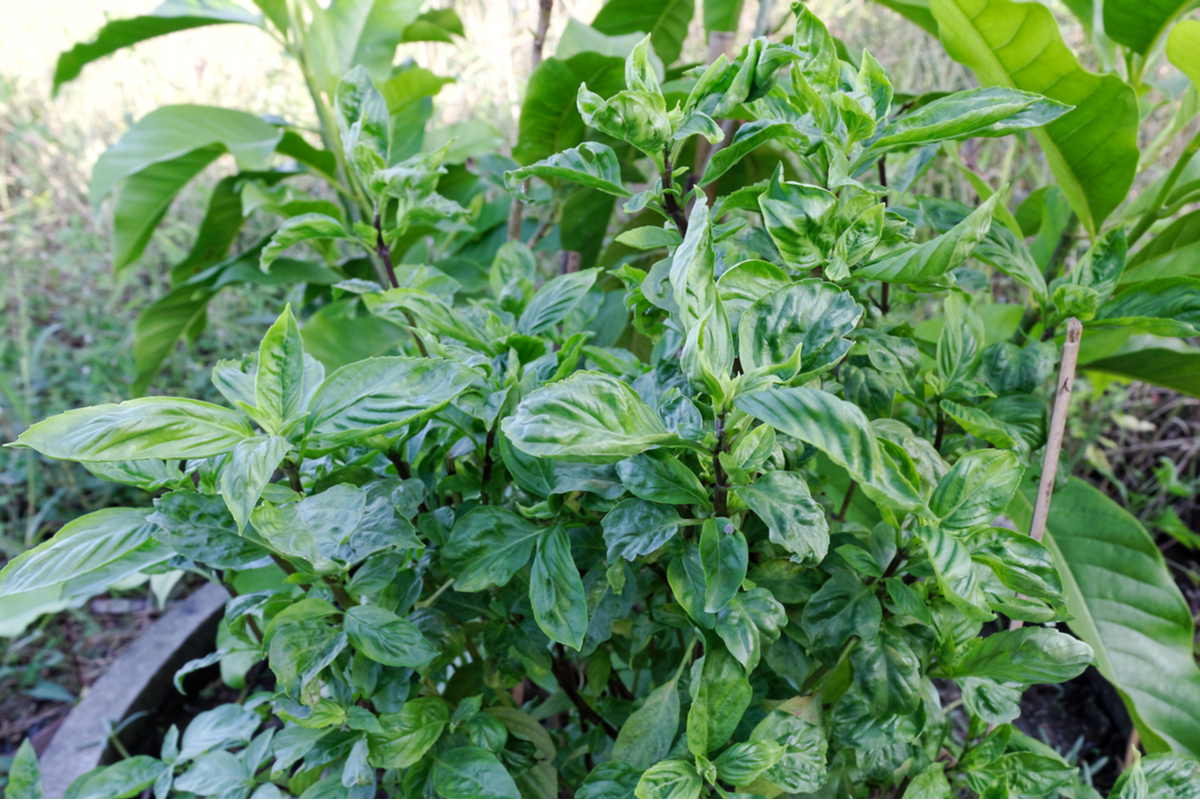
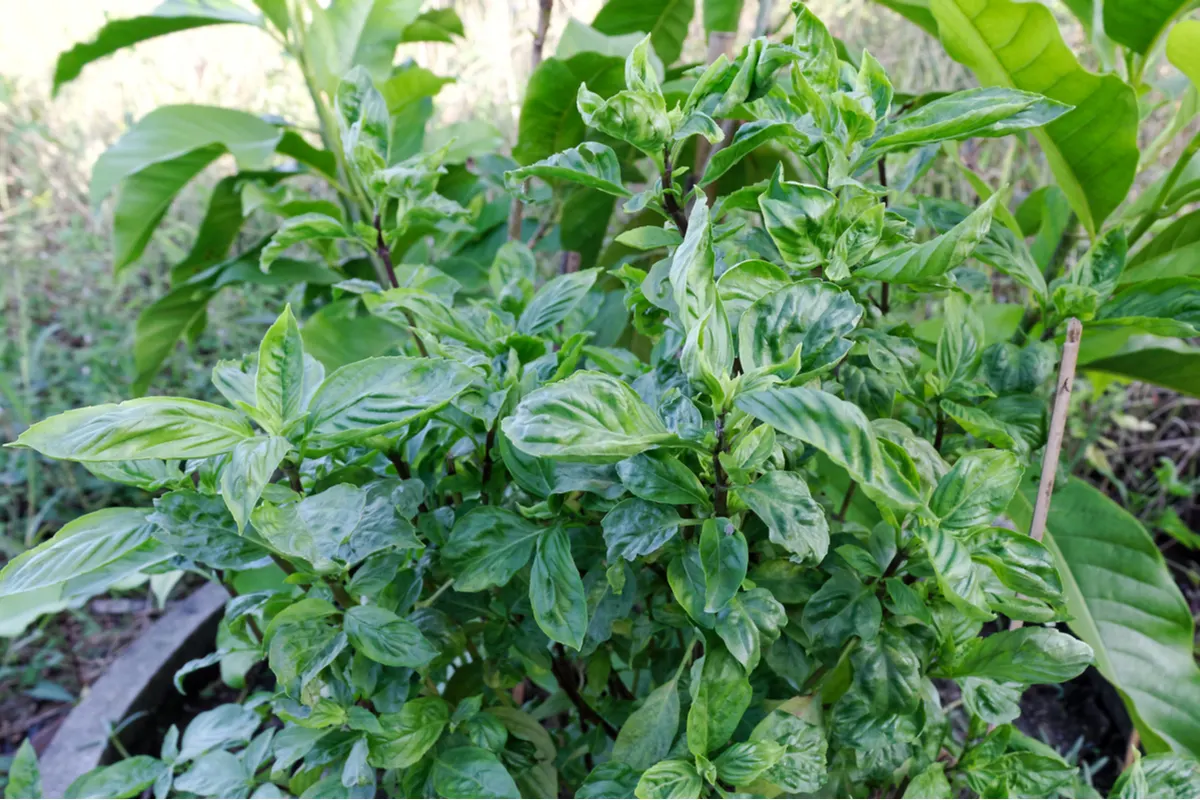
Some bugs feed on the leaves by sucking out the chlorophyll, inflicting clear spots on the leaves. These bugs embody spider mites, whiteflies and aphids. As soon as these sucking bugs assault the leaves, the plant turns into confused and the leaves might flip brown, begin curling and fall off.
For spider mites, spray the underside of the leaves with an acceptable miticide protected for veggie gardens. Greater than a single software is normally wanted to regulate the pests.
Infestations of aphids and whitefly could be managed by an natural insect spray. Alternatively, you may spray the crops with an answer of soapy water or insecticidal cleaning soap.
Temperature Fluctuations
Chilly drafts are lethal for basil crops. As basil is a tropical plant, any chilly snap will stress the plant, and this stress might end in translucent spots on the leaves. For outside crops, be sure to cowl with frost safety material in colder climate. For indoor crops, transfer out of chilly drafts and right into a sunnier spot. If that is nonetheless an issue, put money into develop lights.
Overwatering
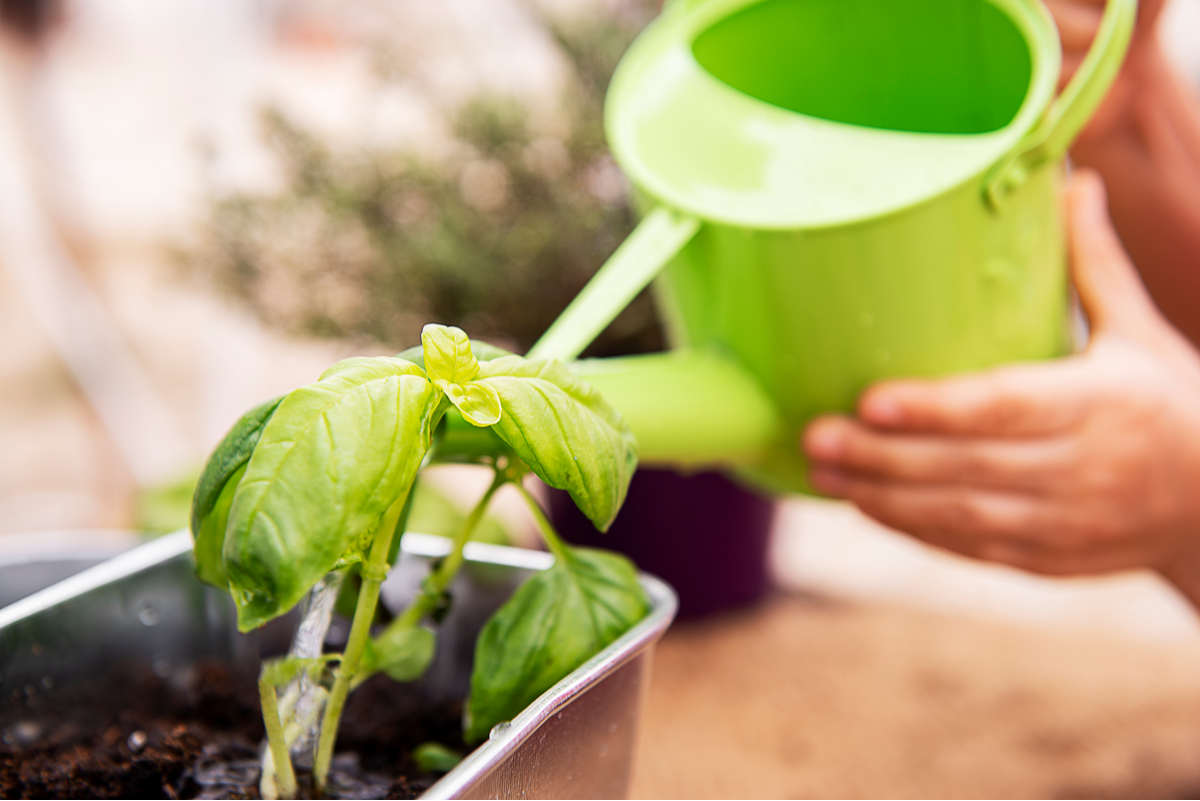
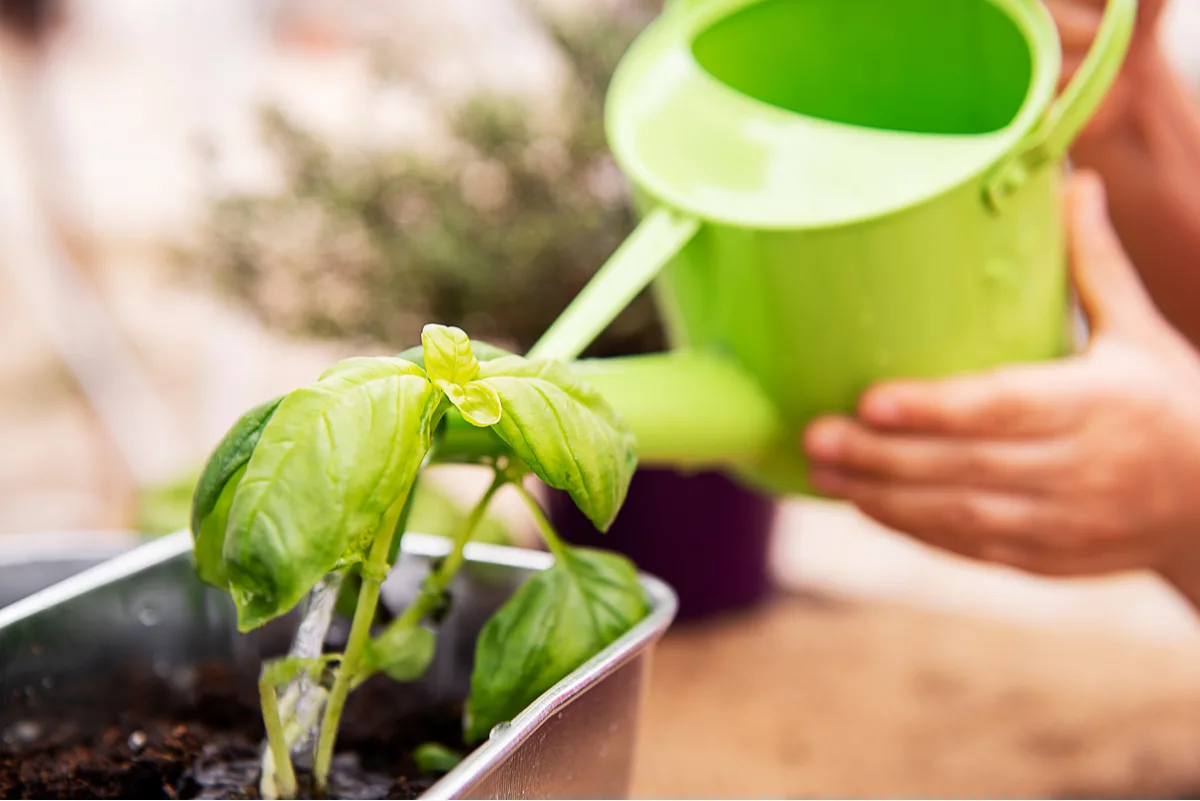
Translucent stems and leaves can be the results of overwatering. The plant turns into mushy and stems and roots begin to rot. The roots of the plant won’t get sufficient oxygen to operate and they’ll begin suffocating, leading to dry papery leaves.
Scale back your watering schedule and permit the plant to dry out a bit earlier than watering once more. Test that the drainage is adequate and that, in containers, the water is draining out of the drainage holes. Prune off any broken leaves and progress ought to return to regular.
Fungal Infections
Some fungal and bacterial infections may trigger the leaves of basil to show clear or translucent. Leaf Spot, for instance, causes small translucent spots to type on the leaves. These develop larger and type darkish edges. The leaves can flip, brown, black and yellow. Downy mildew may also end in clear leaves.
Usually the trigger is excessive humidity and that is straightforward sufficient to control by pruning the crops often and giving them higher air flow indoors. Additionally, guarantee water doesn’t splash on the leaves when watering, inviting infections to begin. Lower off all of the contaminated leaves and if severe, deal with with an natural fungicide.
Nutrient Deficiencies
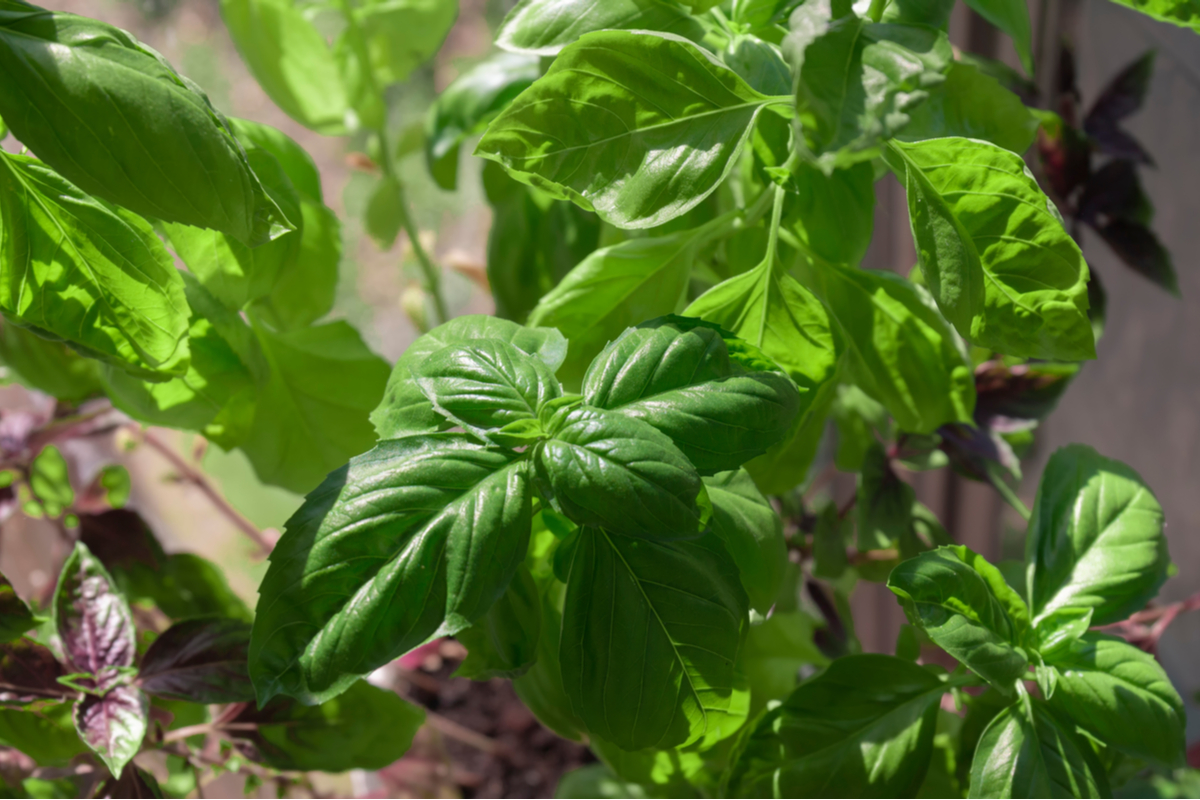
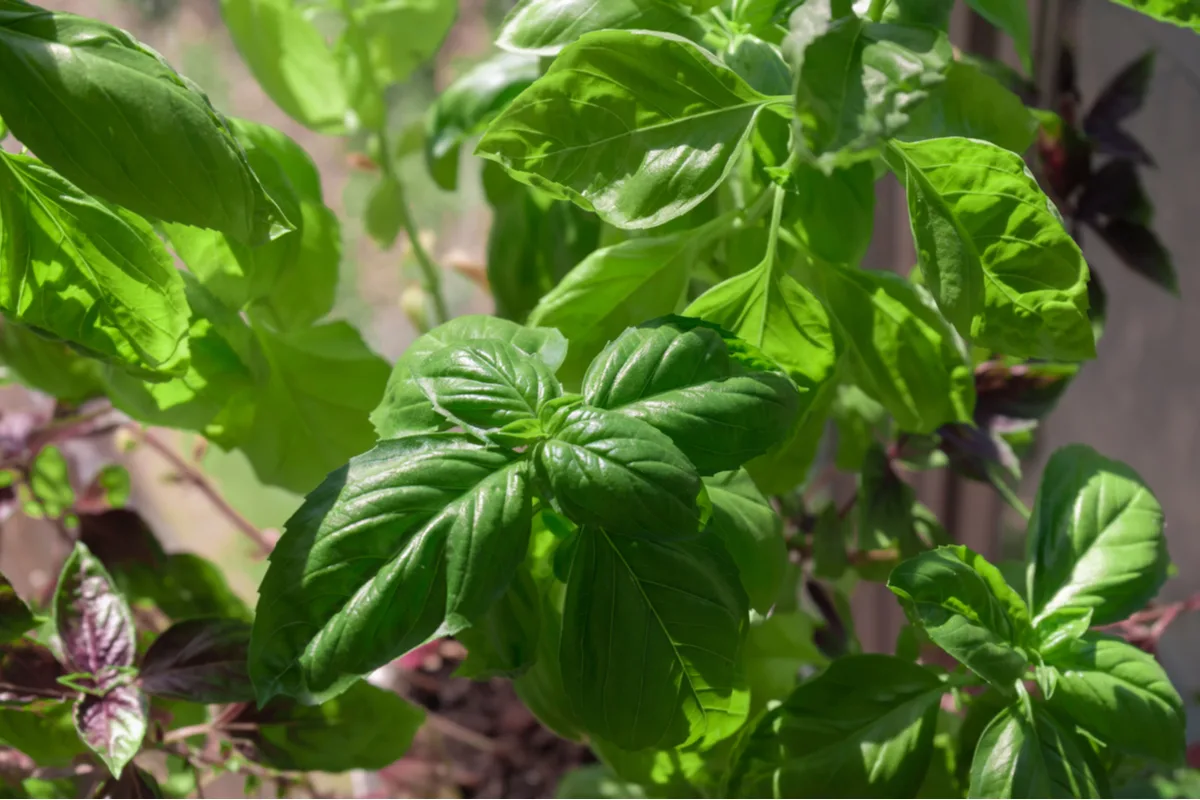
The shortage of some vitamins might trigger clear leaves. Nitrogen is important for wholesome inexperienced leaves and a scarcity of it might trigger the decrease leaves to grow to be clear whereas the newer leaves dissipate the nitrogen assets. Add a number of doses of nitrogen-rich fertilizer and extra natural compost to rectify the issue.
In colder climates, basil might endure from a scarcity of iron. A deficiency of iron, despite the fact that it’s a micronutrient, causes stress and may end up in the leaves turning clear and pale in shade. To repair the issue it’s greatest to conduct a pH take a look at on the soil. The soil pH must be above 6.0. Any much less and an all-purpose fertilizer, elemental sulfur, or chelated iron will likely be vital to extend the acidity within the soil and steadiness out the vitamins.
5. Curling Leaves
Lack Of Mild
Insufficient daylight (lower than 4-5 hours of full solar) will trigger leaves to curve or flip yellow and finally drop off. Test on the quantity of sunshine and transfer containers if vital. Indoors, if the crops should not getting sufficient gentle, it might be higher to put them beneath develop lights.
Lack Of Water
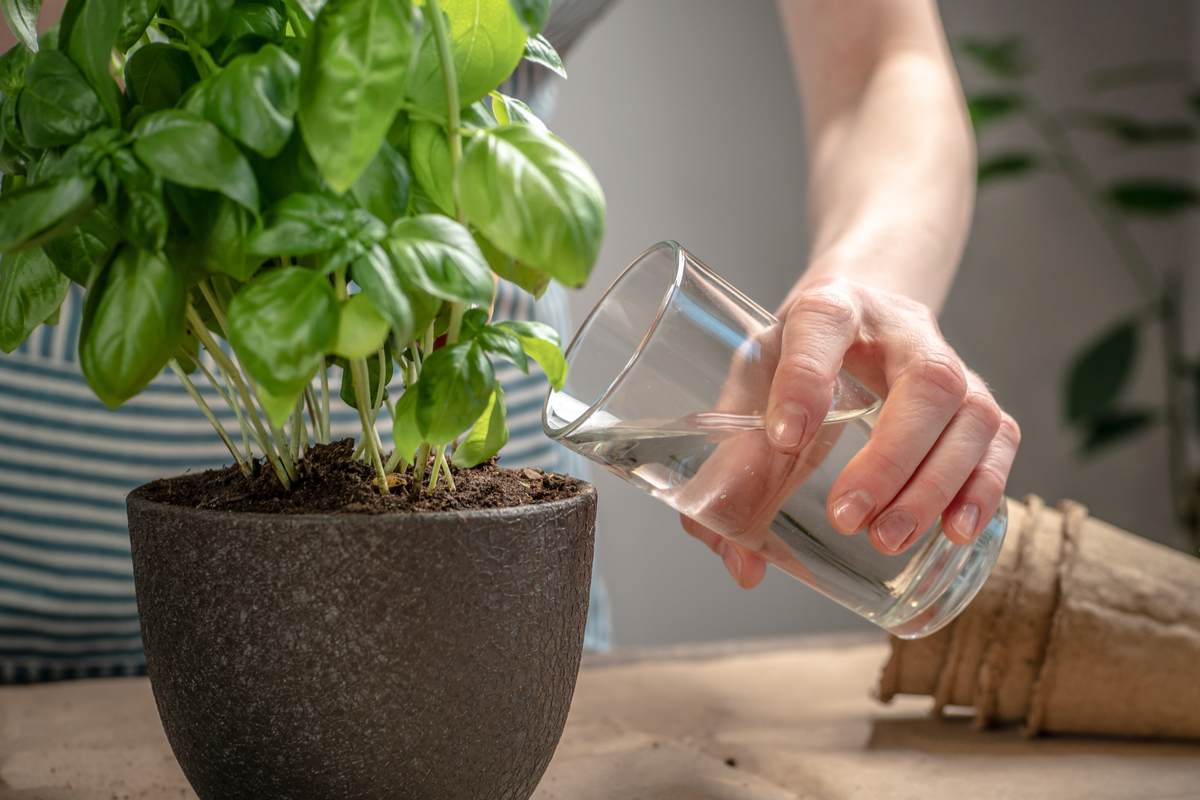
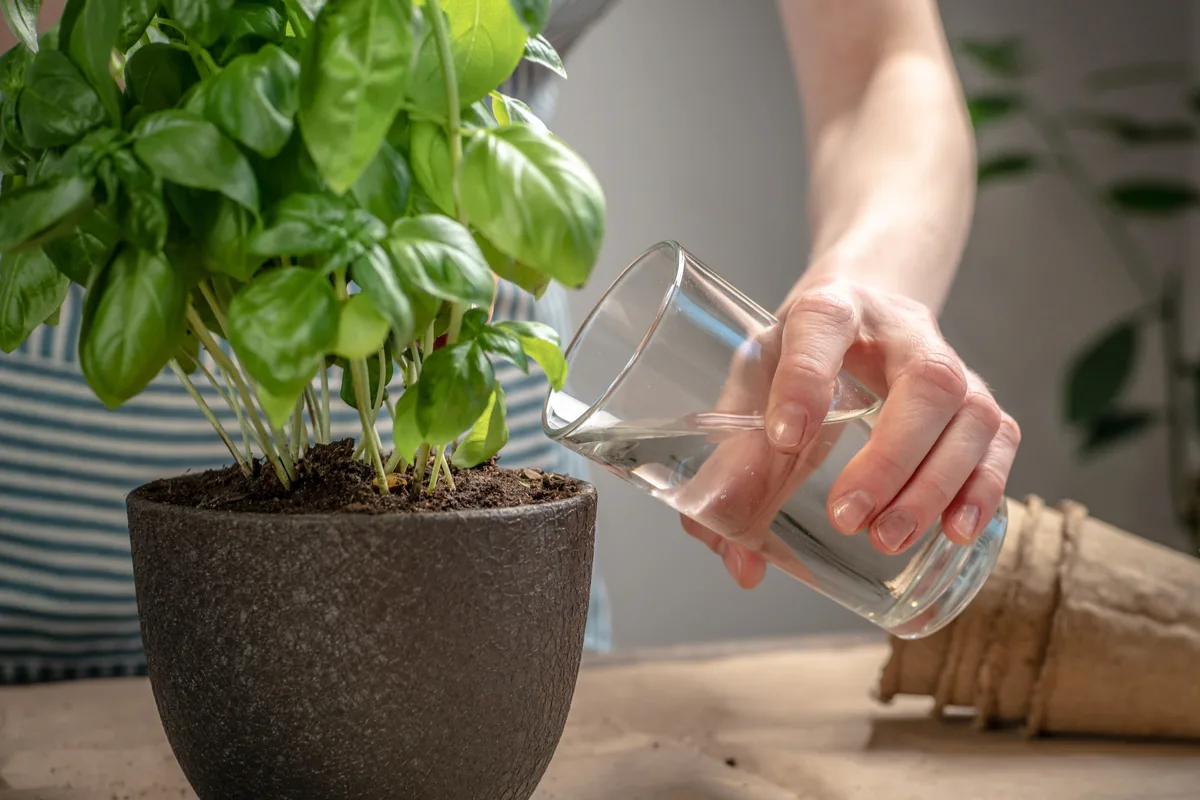
Curling leaves may be a results of dry soil. Be certain that to often water basil crops throughout the rising season to keep away from the leaves curling.
Sucking Bugs
Pests like aphids, spider mites and even scale that harm the leaves by sucking the chlorophyll out of the leaves may additionally trigger stress and make the leaves curl. Spray with neem oil or use an insecticidal cleaning soap over a number of functions to fully take away the pests.
6. Wilting Leaves
Pests
Some basil pests fairly actually suck the life out of the leaves, inflicting them to wilt. Test for pests like spider mites, aphids and whiteflies and deal with the plant instantly to do away with them.
Fusarium Wilt
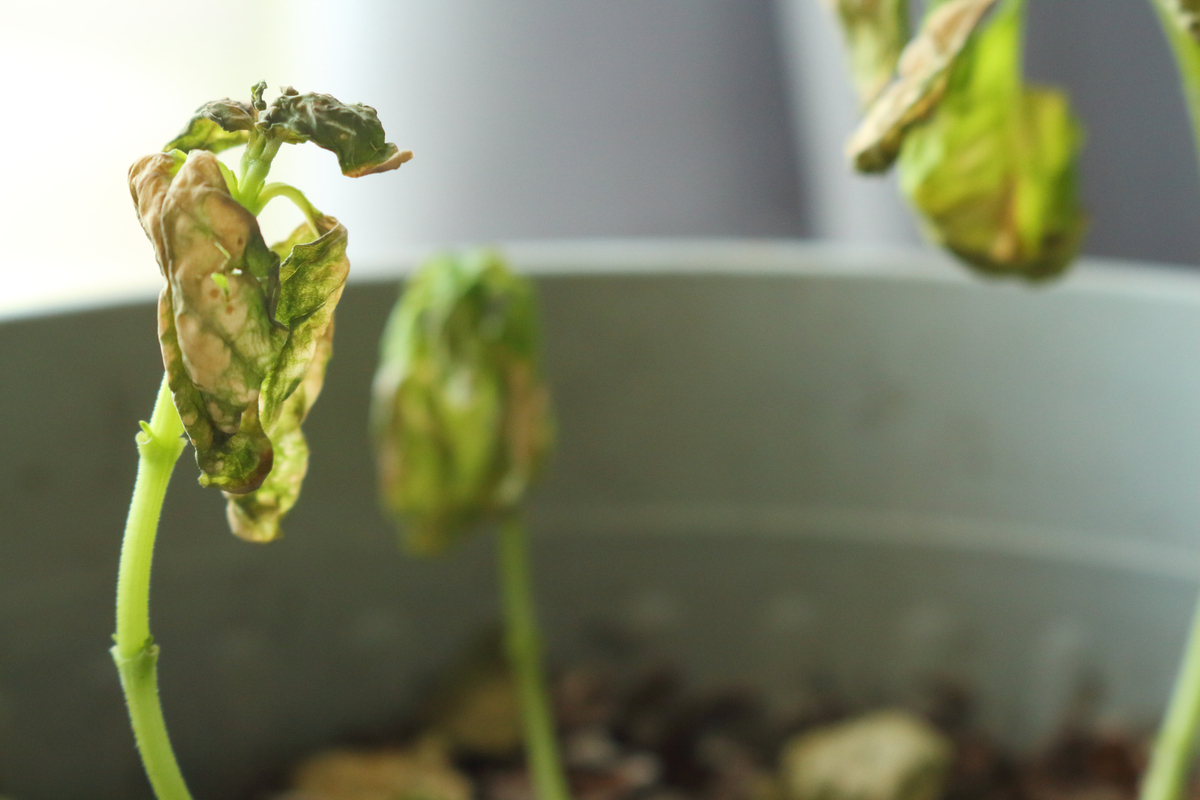
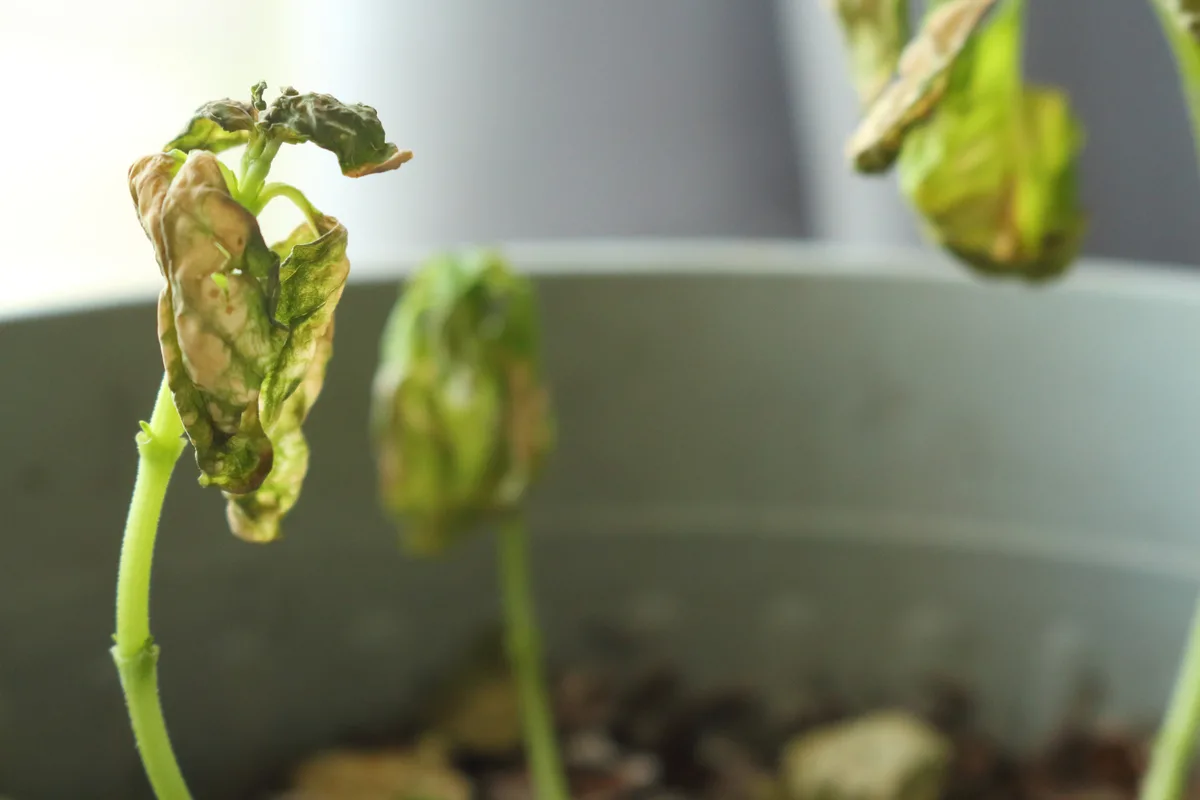
This can be a fungal illness that wilts the leaves and might flip them yellow. The stems additionally grow to be contaminated, stunting progress. The leaves might even drop off and the plant will finally die. The underside leaves will present signs first, normally on one facet of the plant. Crops will have to be eliminated and destroyed as there’s, sadly, nothing that may be carried out.
Leaf Spot
Spots on the leaves, true to the title, typically point out the an infection, Leaf Spot. As soon as these spots seem, the leaves will begin to wilt, turning into extra extreme over time. Lower off any contaminated components of the plant and discard them. Bear in mind to not throw them on the compost heap to keep away from spreading the issue.
Root Rot
Primarily brought on by overwatering or improper drainage, root rot causes a number of issues to your basil. Unable to attract up extra water or vitamins because of the broken root system, the leaves will begin to wilt and the stems will grow to be mushy. To regulate the unfold of this illness, it’s greatest to replant or repot the crops, reducing off any broken roots and planting them in contemporary soil.
Learn Subsequent:
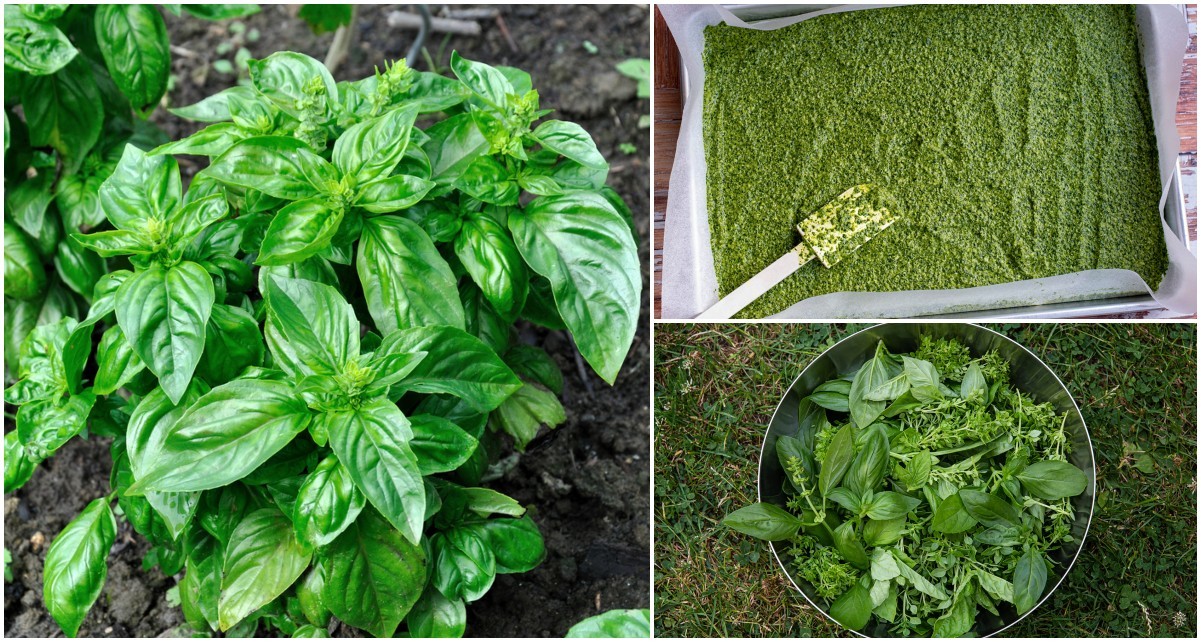
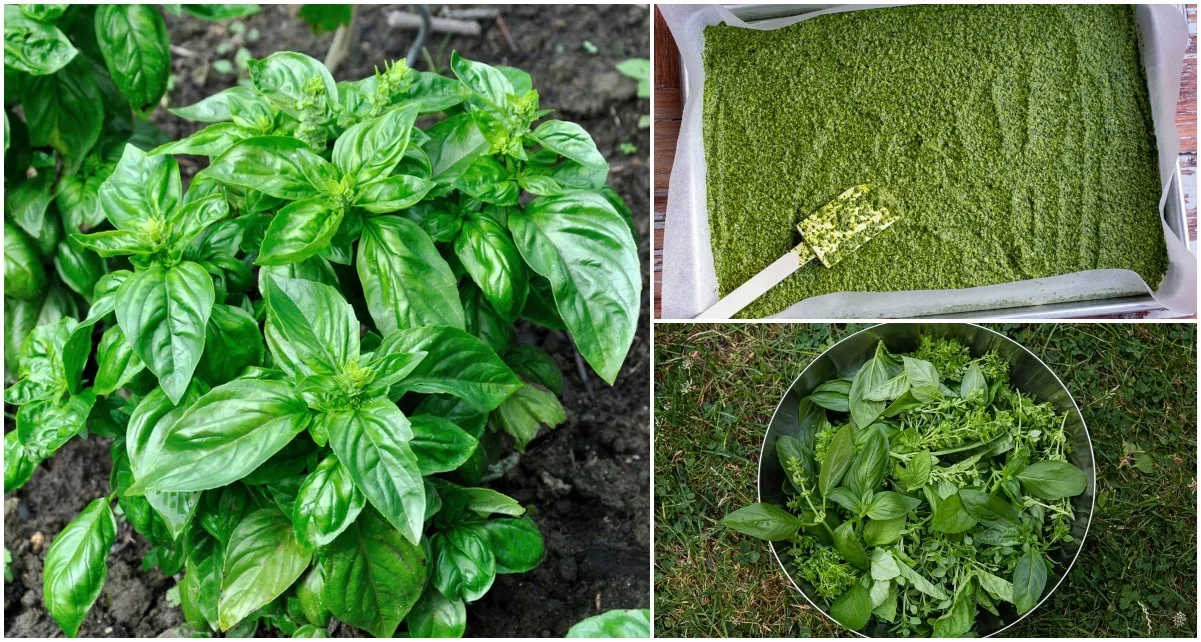

Get the well-known Rural Sprout e-newsletter delivered to your inbox.
Together with Sunday ramblings from our editor, Tracey, in addition to “What’s Up Wednesday” our roundup of what’s in season and new article updates and alerts.
